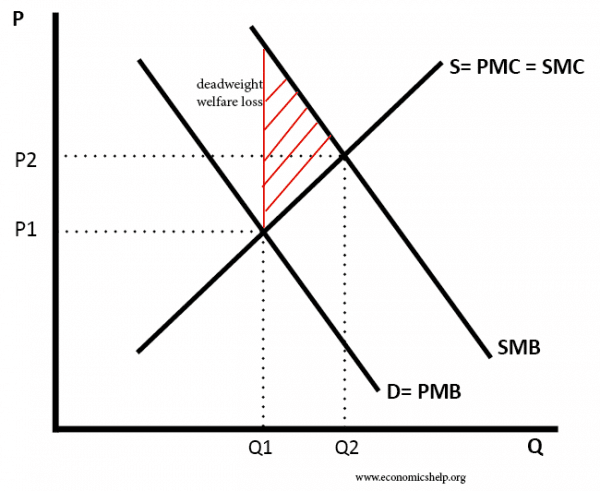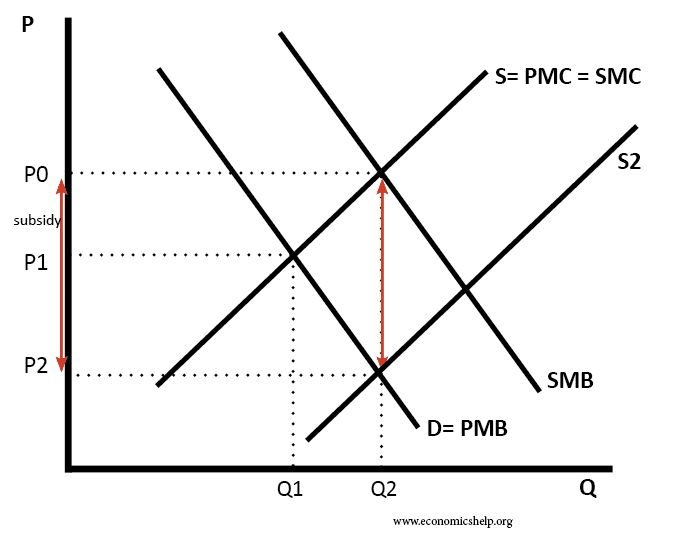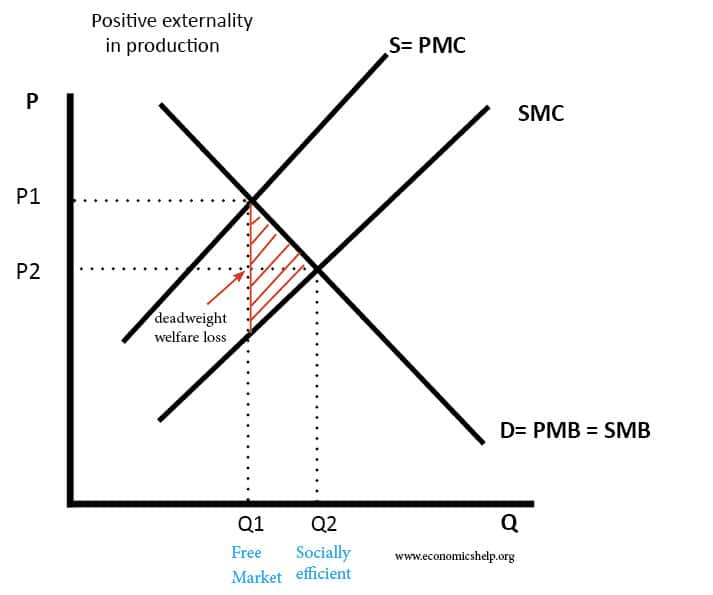Because There Are Positive Externalities From Higher Education
Private markets will over-supply college classes. This is because there is a free benefit to society.

Positive Externality Energy Education
Higher education only gets more expensive.

. Because there are positive externalities from higher education Select one. While not always easy to measure according to Walter McMahon the positive externalities to education typically include better health outcomes for the population lower levels of crime a cleaner environment and a more stable democratic government. What many of these individuals likely mean when they call higher education a public good is that higher education has positive externalities.
Positive externality can be defined as this occurs when the consumption or production of a good causes a benefit to a third party an example can be education when people go in college. The club example from above is that of a negative externality. But also the rest of society benefits from your new skills.
This chapter discusses the externalities in education. Private markets will under-supply college classes. Government subsidized scholarships are an example of a government policy aimed at correcting.
Because there are positive externalities from higher education a. The government should impose a tax on college students c. The external benefits of education are those benefits to society that are above and beyond the private benefits realized by the individual decision maker.
Externalities can be defined as whenever the benefit or cost of consuming a good affects people that are not actually consuming it. In that case a few more people will be able to pay taxes and thus increase the Governments tax revenue which can then be used. Its a known fact that higher education makes people more employable.
Positive and negative externalities. Because there are positive externalities from higher education a. Consuming a healthy diet ultimately will benefit others in society because less health care costs higher productivity.
Private markets will over-supply college classes d. Market participants produce too little of a positive externality. The government should impose a tax on college students.
Private markets will under-supply college classes. Because positive externalities are primarily beneficial to society as a whole they are to be promoted whenever possible. If a few more individuals receive higher education a few more people will become more employable.
Higher education that receive the most attention are the societal benefits from the expan-sions of higher education including reduced crime improved health more informed po-litical debate and the higher likelihood of strengthening civil society. Private markets will under-supply college classes. They come in two forms.
A positive externality example is when a child goes to school and receives an education. Private markets will over-supply college classes. In contrast negative externalities are the harms to those third parties.
Because there are positive externalities from higher education Private markets will under-supply college classes. Positive externalities from education occur primarily from the acquisition of basic literacy. Government intervention cannot improve the market for college classes.
A positive externality occurs when a good benefits. Private markets will over-supply college classes. The government should impose a tax on college students.
After all positive externalities exist from investment in education. Look at what all higher education helps achieve. With better education you are more productive and can gain more skills.
Positive externalities are the benefits experienced by these third parties as a result of consumption or production. Because there are positive externalities from higher education. O ne example of a positive externality is the market for education.
Education is not only beneficial for the people who have education but also to others. Economists use the term externality to describe any time the price determined by a market doesnt reflect the true cost of an action. The more education a person receives the greater the social benefit since more educated people tend to be more enterprising meaning they bring greater economic value to their community.
What are the positive externalities of education. For these reasons many nations have chosen to use. The government should impose a tax on college students.
Education or learning new skills. Government intervention cannot improve the market for college classes. A positive externality is a good consequence that isnt taken into account.
This implies that if individuals voluntarily obtain basic literacy government investment in additional education will not provide any social benefit High 1985. They are above and beyond both private monetary benefits in the form of increased earnings because of education and the private nonmonetary consumption. Government intervention cannot improve the market for college classes.
Government intervention cannot improve the market for college classes b. Varian 2014 reached to the conclusion that positive externalities are most of the time under produced. University researchers create a positive externality because what they discover in their research labs can easily be learned by others who havent contributed to the research costs.
An externality is an effect that an economic transaction has on a party who is not involved in the transaction. Therefore it is a positive externality. The club imposed a cost on you an external agent to the market interaction.
A solution to that can be to subsidize higher education. The indirect effects from education are externalities because the effects of the individuals investment in education on intervening variables such as say the rule of law is small and taken. Up to 256 cash back Because there are positive externalities from higher education A.
Because externalities that occur in market transactions affect other parties beyond those involved they are sometimes called spillovers Externalities can be negative or positive.

Positive Externalities Economics Help

Comments
Post a Comment